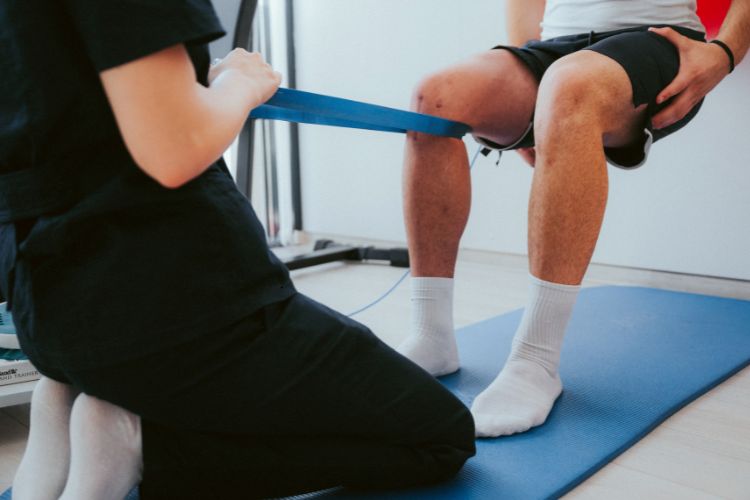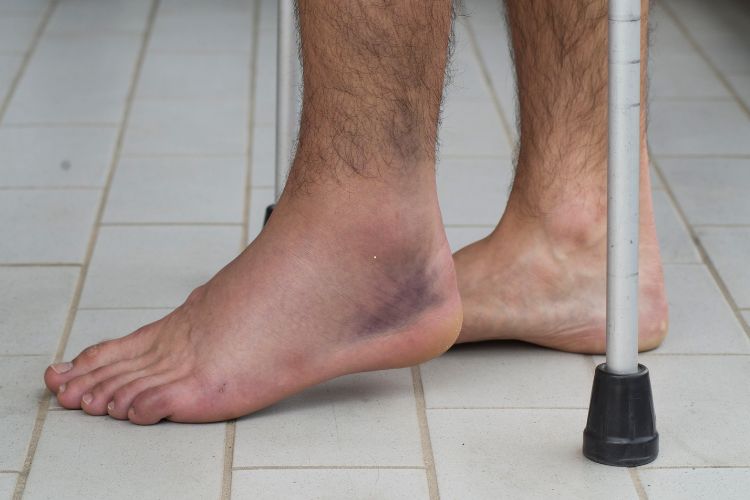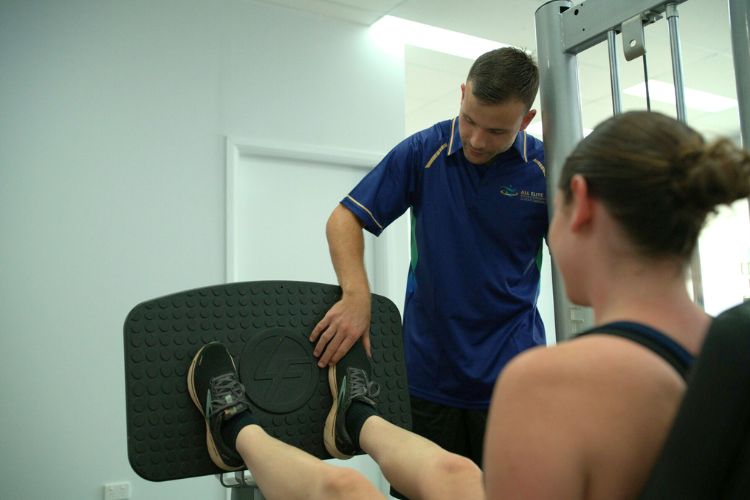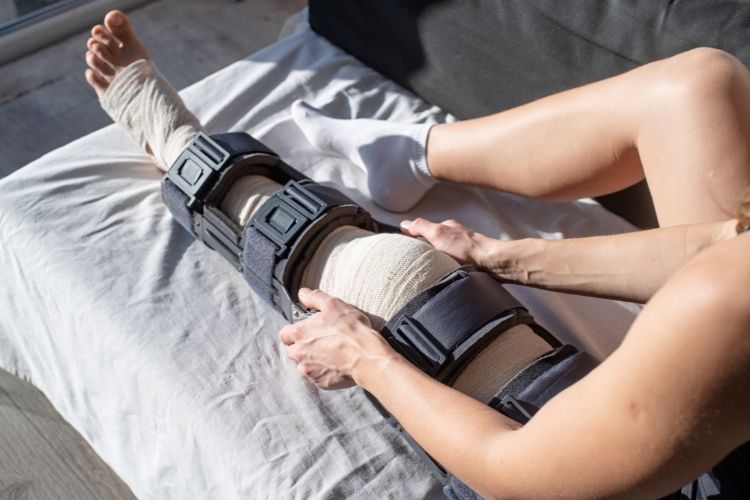What's Involved in Sports Injury Management?
Whether you're a pro football player or a weekend warrior, playing sport comes with risks. No matter your fitness level, the thrill of competition can sometimes result in unexpected injuries, from minor sprains or tennis elbow to more severe fractures or ligament ruptures such as ACL injuries. Proper management of these injuries is key to recovery, preventing long-term damage and coming back stronger.
Without proper care, even minor niggles can turn into chronic conditions, prematurely ending even the most promising athlete's career. Seeking professional help from a physiotherapist can be the difference between fully recovering and returning to sport and never taking the field again. Let's get into it.
What Is Sports Injury Management?
Sports injury management is the process of diagnosing, treating, and rehabilitating injuries that occur during physical activities or sport. It's a holistic approach that not only focuses on fixing the injury but getting the patient back to full function and preventing future injuries. This treatment program involves immediate care, such as applying the RICE (Rest, Ice, Compression, Elevation) protocol, then tailored rehabilitation protocols designed for you by your highly trained physiotherapist, rehabilitation exercises and, in extreme cases, surgery.

An immediate response to sports injuries is key to long-term protection. The RICE method above helps reduce inflammation and swelling, limits the severity of the injury, and speeds up the initial recovery phase. Sticking your head in the sand and ignoring an injury can delay treatment and result in prolonged pain, instability, decreased range of motion and increased chance of re-injury. Any professional athlete will tell you that proper management should always start as soon as the injury occurs, and the next step is a thorough early professional assessment.
Common Sports Injuries
Sports injuries can vary depending on the sport, but there are some common ones that occur across all sports.
Sprains.
A sprain occurs when ligaments, the tough tissues that connect bones, are overstretched or torn. The knee is a common area, with sprains to the anterior cruciate ligament (ACL) and medial collateral ligament (MCL), among the top injuries in netball and football. Ankle sprains are also a common visitor to the physio's room.

Meniscal Injuries.
The meniscus is a piece of cartilage in the knee that acts as a shock absorber between the thighbone and shinbone. Meniscal injuries usually occur when you twist or pivot on the knee and are common in sports that require sudden changes in direction, like tennis, rugby league and netball.
Fractures.
A fracture is a break in the bone, usually from direct impact, which usually require immobilisation. However, another common fracture is a stress fracture or stress reaction. These are where the bone itself is stressed to the point that it can no longer tolerate the load you are putting it through or even just general daily activities. These injuries require immediate attention and a longer-term rehabilitation program.
Shoulder Injuries.
The shoulder is a common area of injury and stiffness, especially in contact sports like rugby and sports that involve repetitive movement of the muscles and joints, such as swimming.
Shoulder injuries in rugby typically present as dislocations, AC joint injuries and rotator cuff tears due to tackles and collisions to that area of the body. Swimmers often get shoulder impingement and tendonitis from overuse of the shoulder muscles in strokes like freestyle and butterfly.
Initial Assessment and Diagnosis
When an injury occurs in sport, it's best to get a professional assessment as quickly as possible. Healthcare professionals like physiotherapists will use various tools to diagnose the injury accurately, provide recommendations on treatment options, and work with you to develop a personalised treatment plan.
The consultation will include taking a detailed history of your injury, understanding your sport's demands and doing a physical examination of the affected body parts.

Diagnostic imaging, a combination of X-ray, ultrasound, and MRI, may be recommended to provide a deeper evaluation of the injury, particularly in cases of fractures or ligament tears.
Accurate diagnosis means a targeted treatment plan and a better chance of full recovery. This initial assessment provides critical insight that will guide decisions on whether surgery is required or if a non-invasive approach like physiotherapy can work.
Treatment Options for Sports Injuries
There are various treatment methods for sports injuries, but the best approach depends on the type and severity of the injury. Here are a few commonly used treatment methods.
RICE Method.
The first step in managing acute injuries is the RICE method, which includes relative rest, ice, compression, and elevation. This helps to control pain and swelling in the early stages of injury. By resting the injured area and applying compression bandages, athletes can support the area, promote blood flow and reduce inflammation.
Physiotherapy.
Ask any elite sports team; physiotherapy is the backbone of sports injury recovery. A physio will work with you to develop an individualised exercise program to restore mobility, strength, flexibility and power to the injured area. Hands-on techniques like massage may also be used to improve muscle function and increase blood flow.
Surgery.
For severe injuries such as ligament tears, including ACL injuries or Syndesmosis injuries, or fractures, surgery may be required. Before surgery, rehabilitation is often recommended to strengthen the injured area and improve surgical outcomes. Post-surgery physiotherapy is essential to regain full mobility and strength, to get you back to full performance.

What treatment is best for you depends on your injury, work conditions and overall health. A qualified sports injury specialist will tailor the treatment plan to your needs to get the best recovery.
The Role of Physiotherapy and Rehabilitation
It's well known that physiotherapy is a key part of sports injury recovery, helping restore mobility, strength and balance while preventing future harm. By using a range of sport injury treatement methods and rehabilitation exercises, such as strength training, plyometric training and range of motion exercises, a physiotherapist with specific sporting knowledge can create an individualised program tailored to your specific needs.
Working with a physio will improve physical performance and psychological aspects like fear of re-injury and loss of confidence.
Injury Prevention and Long-Term Care
Anyone who's spent time in the sporting arena knows that preventing injuries involves a well-rounded training regime, including proper warm-ups, strength training and flexibility exercises. These conditioning practices reduce the risk of harm and improve overall well-being. Long-term management strategies like ongoing physiotherapy and lifestyle changes can likewise help maintain, and improve peak performance.
By collaborating with a team of healthcare professionals, including your doctor, dietician and physio, you can ensure a safe return to play.
Engage with Sports Injury Management & Get Back in Action
At All Elite Physio, we offer a comprehensive array of sports injury rehabilitation services to meet the unique needs of Australian athletes. Our expert team personalises each treatment plan to support your recovery and optimise your performance. Whether you've suffered a sprain, fracture or muscle strain, our physiotherapists are here to safely get you back in action. Contact us to start your recovery journey today!
